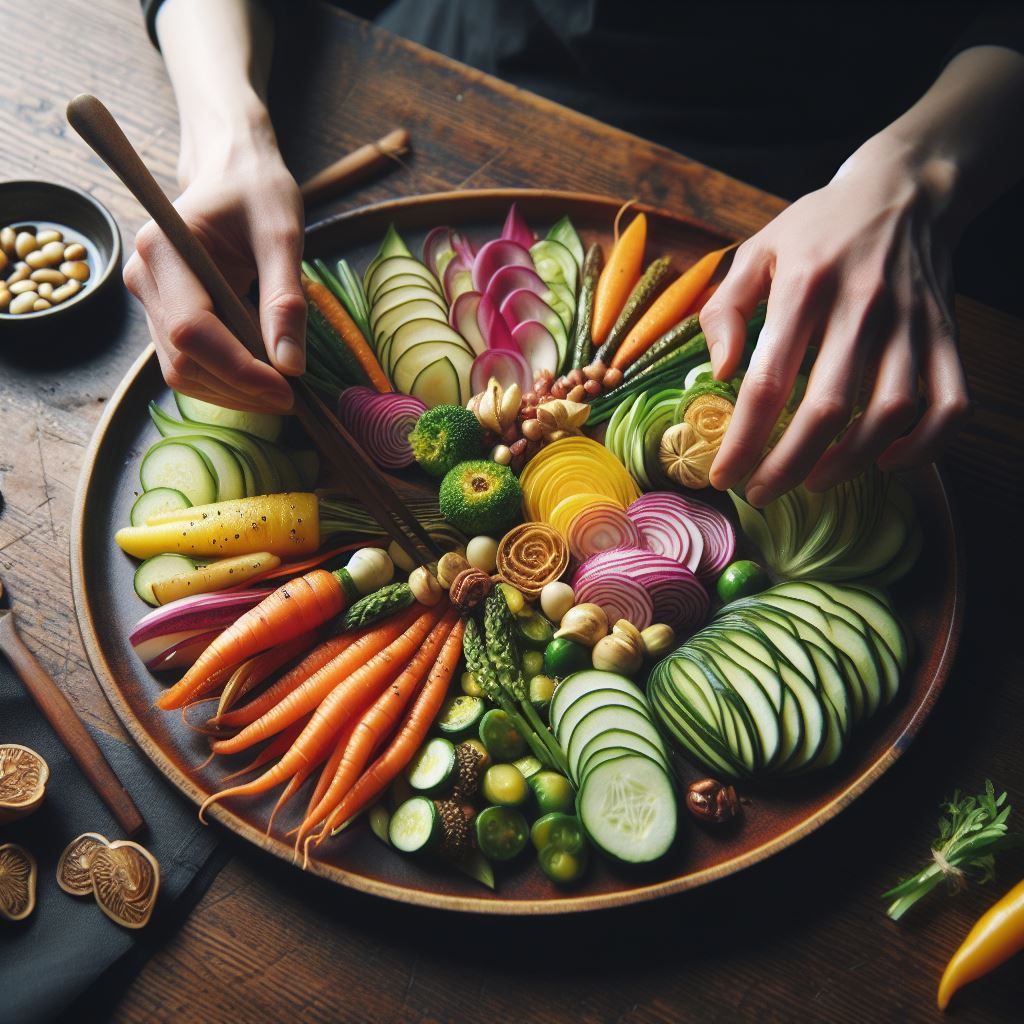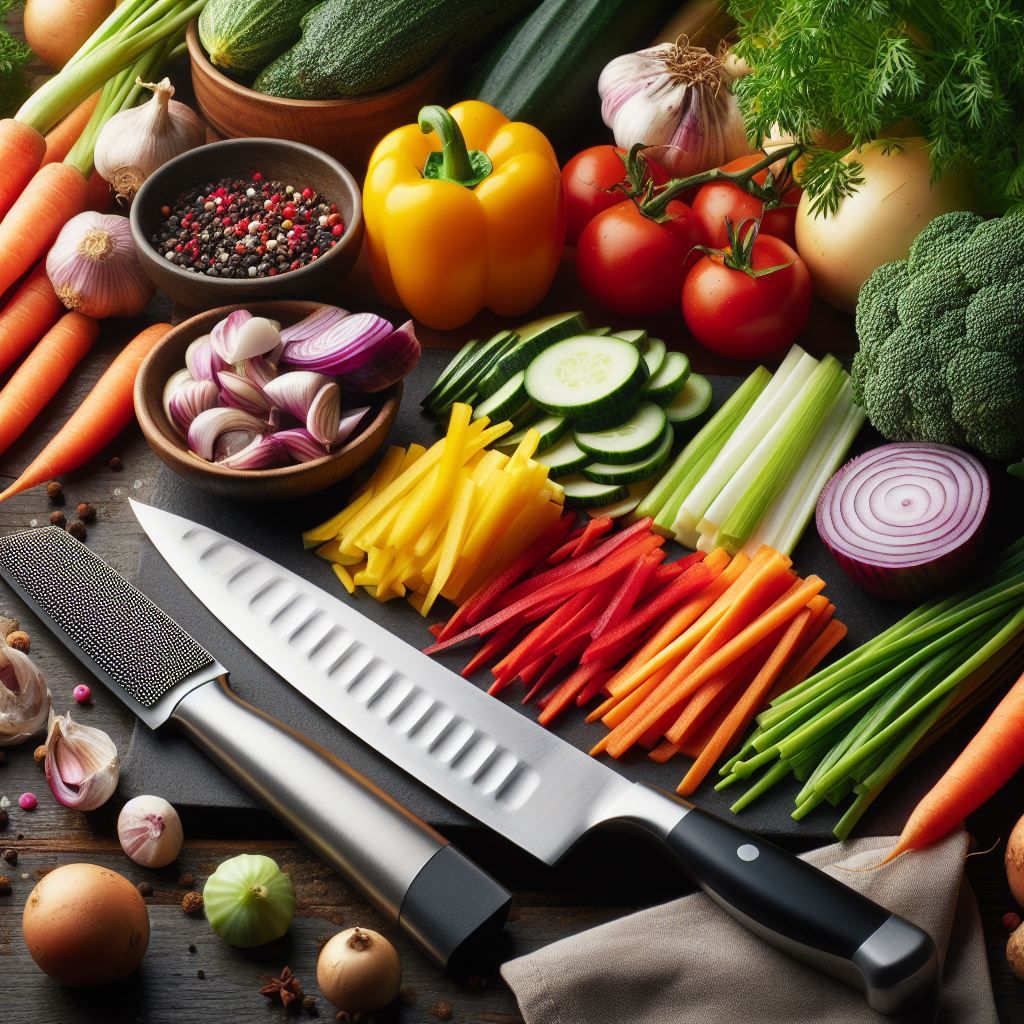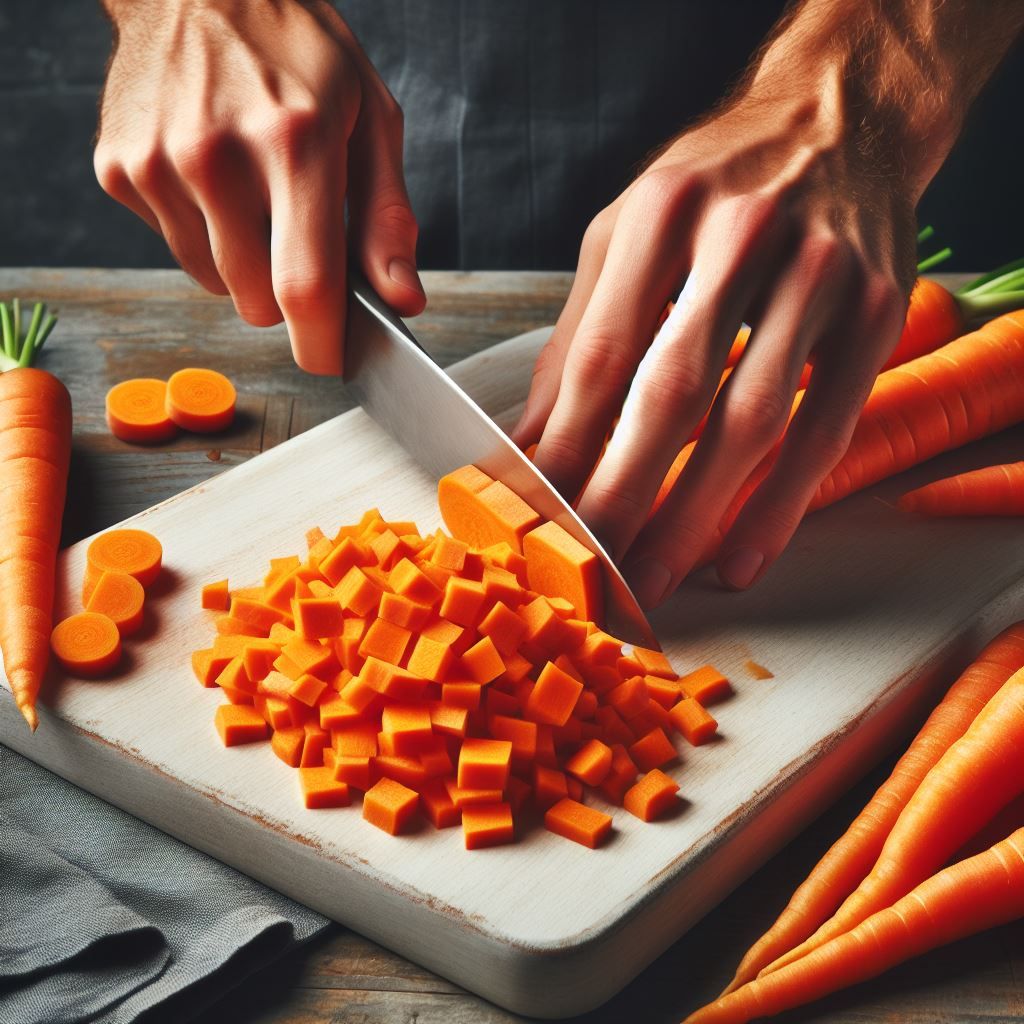
Knife Skills for Masterful Culinary Creations: The Top 10 You Need to Know
Knife Skills for Masterful Culinary Creations: The Top 10 You Need to Know
You’re in the kitchen, knife in hand, staring down a pile of vegetables that need chopping. But your knife skills are a little rusty and you’re not sure where to start. Don’t worry – with a bit of practice, you’ll be dicing, slicing, and chopping like a pro in no time. We’ve rounded up the top 10 essential knife skills every home cook needs in their culinary arsenal. From how to properly hold a knife to cutting techniques for different ingredients, we’ll walk through the key skills step-by-step. With these techniques under your belt, you’ll be able to create beautiful, masterful dishes with ease. So grab your favorite chef’s knife and let’s get chopping! This article will turn you into a knife-wielding maestro in the kitchen.

Proper Knife Handling and Safety
Working with sharp knives requires care and caution. Follow these tips to keep your fingers intact and avoid a trip to the ER.
Choose the right knife for the job.
A chef’s knife can do most tasks, but for specifics like slicing bread or peeling produce, use a knife designed for that purpose. Make sure any knife you use has a sharp blade; dull knives require more force and are more likely to slip.
Hold knives properly.
Wrap your fingers around the handle with your index finger placed along the top of the blade. Keep your fingers curled under as you chop. Never grip higher up on the blade.
Pay attention.
Keep your eyes on the knife at all times as you work. Don’t get distracted talking or watching TV. Focus on the task at hand to avoid nicks and cuts.
Move slowly and deliberately.
Rushing with a knife in hand is a recipe for injury. Work at a pace that feels controlled and comfortable for you. Make multiple passes with the knife instead of trying to chop everything at once.
Keep knives out of the sink.
Never submerge knives in soapy water where you can’t see the blade. Wash and dry knives separately by hand instead of in the dishwasher. Store them in a wooden block, on a magnetic rack, or in a sheath, not loose in a drawer.
Consider cut-resistant gloves.
Especially when you’re first learning, cut-resistant gloves can provide an extra layer of protection for your hands. They won’t prevent cuts altogether but can reduce the severity. Look for gloves rated at level 3 or higher.
With regular practice of these essential knife skills and safety tips, you’ll gain confidence and mastery in the kitchen. But never become complacent—a knife deserves your full attention and respect every time you use it. Consistency and caution are key.

The 10 Essential Knife Cuts for Culinary Mastery
Dicing
Dicing vegetables into uniform cubes is essential for even cooking and an attractive presentation. Hold the vegetable steady on a cutting board and make parallel cuts to form sticks. Then rotate the vegetable 90 degrees and make cuts across the sticks. Aim for 1/4-inch cubes. Dicing onions, carrots and celery is a must for homemade soup stocks and sautés.
Mincing
Mincing garlic and fresh herbs releases their flavors and aromas. Hold the tip of your knife on the cutting board and rock the blade back and forth over the ingredient using quick, short strokes. Gather the minced pieces with the side of your knife and continue rocking until the pieces are very fine. Add minced garlic to pasta sauces, salad dressings and stir fries.
Chopping
For a rustic chop, hold the tip of your knife on the cutting board and make a series of vertical cuts through the ingredient using a rocking motion. The pieces will be uneven in size. Use chopped herbs in chimichurri sauce or pesto, and chopped nuts in salads.
Julienne
Julienne cutting vegetables into thin strips is ideal for salads and garnishes. Trim the vegetable into a rectangular shape. Make vertical cuts to form sticks and then rotate 90 degrees to make horizontal cuts across the sticks. The result will be thin, matchstick pieces. Julienne cucumbers, carrots and bell peppers make colorful additions to salads.
Brunoise
Brunoise takes knife skills to an advanced level by dicing ingredients into very fine, precise cubes of about 1/8 inch. It requires patience and a sharp knife. Trim the vegetable into a rectangular shape. Make very thin vertical cuts to form sticks, then rotate 90 degrees and make fine horizontal cuts across the sticks. Brunoise diced onions, shallots and turnips are used in fine cuisine.
With practice, these essential knife cuts will become second nature and open up a world of possibilities in your cooking. Be patient, focus on safety and your skills will grow with each cut.
Knife Skills for Vegetables: Dice, Slice, and More
As a chef, your knife skills are one of the most important techniques to master. When it comes to preparing vegetables, precision and consistency are key. The way you cut vegetables not only impacts their texture and flavor, but also how evenly they cook. Here are some of the knife cuts you’ll use again and again.
Dicing
Dicing vegetables into uniform cubes is ideal for sauteing, stir-frying, and making soups or stews. To dice an onion, cut it in half, peel off the skin and make several horizontal and vertical slices. Then, make slices in the opposite direction to create evenly sized cubes. For bell peppers, cut around the stem, remove the seeds and ribs, and slice into strips, then dice. Practice makes perfect, so keep at it and your dices will become more consistent over time.
Slicing
Slicing vegetables into thin, uniform pieces is great for salads, sandwiches, and garnishing plates. Use a sharp knife and a steady hand to create clean slices. For cucumbers, cut off the ends, peel if desired, and slice into rounds. For radishes, cut off the stems and roots, then slice thinly. Carrots can be sliced on an angle for an attractive garnish. Aim for slices that are 1/8 of an inch or less.
Chiffonade
Chiffonade refers to thinly slicing leafy greens like basil, mint, and spinach. Stack the leaves, roll them tightly, and then slice to create thin ribbons. This technique is perfect for garnishing dishes or adding to salads. The key is using a very sharp knife and keeping your fingers curled under as you slice.
Practice these techniques and soon you’ll be dicing, slicing and chiffonading like a pro. Your culinary creations will be all the more masterful for it! Consistency and precision are key, so keep at it and don’t get discouraged if your cuts aren’t perfect right away. With regular practice, these knife skills will become second nature.
Meat, Fish, and Poultry Knife Skills and Techniques
Boning and Filleting
When working with meat, fish or poultry, you’ll want to bone or fillet them to get perfect cuts. For boning, use a boning knife to carefully cut along the bone to remove it. For filleting fish, use a fillet knife to slice lengthwise down the side of the fish and open it up. Work slowly and be very careful, especially around the ribs. These techniques require practice to master.
Slicing
To slice meat, fish or poultry for recipes like stir fries or sandwiches, use a chef’s knife or slicing knife. Place the item on a cutting board and carefully cut into even slices. Start with larger slices, around 1/4 inch thick. You can then cut the slices into smaller, bite-sized pieces if needed. Always slice against the grain for the most tender results.

Dicing and Chopping
For recipes calling for diced or chopped meat, fish or poultry, a chef’s knife is essential. To dice, cut the item into cubes around 1/4 inch. Make a series of cuts, then rotate the item and make cuts in the opposite direction. Continue until you have evenly diced pieces. To chop, cut the item into pieces of irregular sizes, from 1/4 to 1 inch. Use a rocking motion and be very careful, as the pieces can slip and slide.
Pounding
To pound meat such as chicken breasts, place them between two sheets of parchment or wax paper. Then pound with the flat side of a meat mallet to an even thickness. Pound in short taps, working your way from the center out. Be very careful not to pound all the way through the meat. Pounding helps the meat cook evenly and becomes more tender.
Following these essential knife skills and techniques will make you a master in the kitchen. With practice, you’ll be preparing meat, fish and poultry like a pro in no time. Always remember to work slowly, be extremely careful, and keep your knives sharp for the best results.
Sharpening Your Knives for Optimal Performance
To get the most out of your knives, keeping them sharp is key. Dull knives require more effort to cut and can be dangerous to use. You’ll need a whetstone, honing steel, and patience.
Using a Whetstone
A whetstone is a block of abrasive material used to grind down and sharpen the edge of a blade. Start with a coarse stone, around 220 grit, and finish with a finer grit like 800. Lubricate the stone with honing oil and hold it steady on a damp towel or mat. Maintaining a consistent angle, slide the blade along the stone using even pressure. Do 10-15 passes on each side, checking sharpness with your thumb. Repeat with progressively finer grits until a burr forms, then flip the knife and repeat.
Honing with a Steel
A honing steel realigns the edge of the blade to keep it sharp between whetstone sessions. Hold the steel vertically and slide one side of the knife down at a 15° angle with even pressure. Do 10 passes, flip, and repeat. Two or three swipes on each side is usually enough for routine honing. Be very careful, as the blade will be extremely sharp!
Additional Tips
- Sharpen knives as soon as they start to dull for best results. It’s easier to maintain an edge than repair major damage.
- Keep your whetstones and honing steel in a safe spot away from moisture. Dry them after each use to prevent rust. • Never use a power sharpener, as it can damage the blade.
- • Have your knives professionally sharpened once a year or so to restore the edge. Home methods can only do so much.

With regular sharpening and honing, your knives will stay as sharp as the day you got them. Keep at it and your knife skills will be the envy of all your friends! The key is maintaining the edge and not letting your knives get too dull before resharpening. Put in the effort to keep your tools in top working condition and you’ll be slicing and dicing like a pro in no time.
Conclusion
At the end of the day, knife skills are essential for any aspiring chef or home cook who wants to up their game in the kitchen. Mastering these top 10 will allow you to prep ingredients safely, efficiently, and beautifully. With practice, they’ll become second nature. Then you can focus on being creative, improvising recipes, and wowing everyone with your impressive culinary creations. Who knows, you may even find yourself on a path to becoming a master chef one day. For now, grab your knives and cutting board and start working on your technique. Your dishes will taste better and your cooking confidence will soar higher than a perfect souffle.










